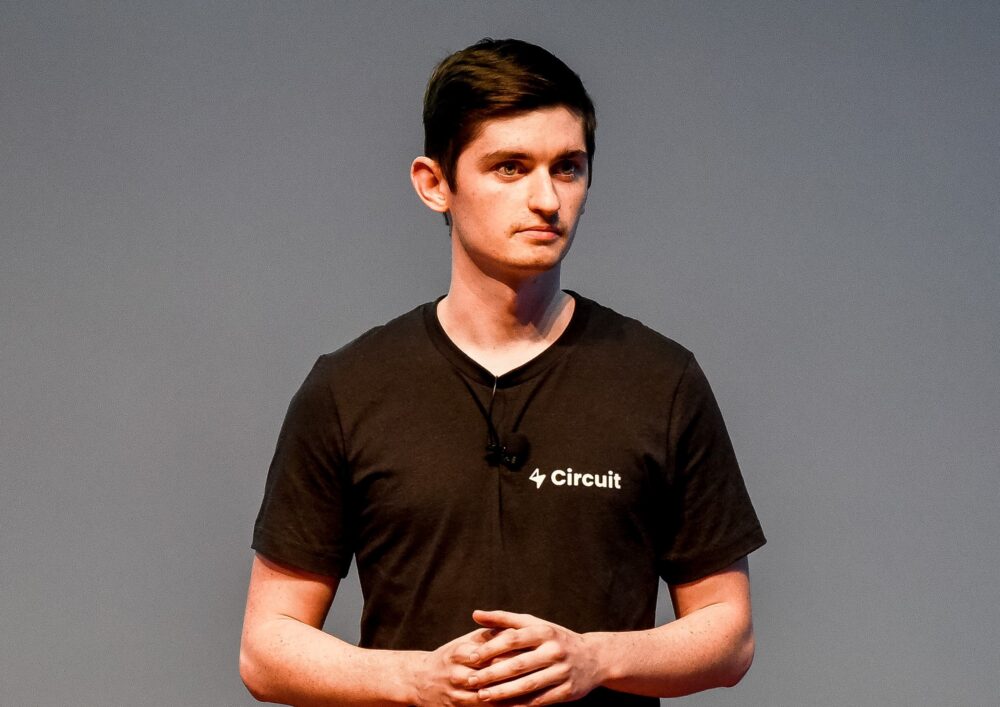How to bootstrap your SaaS startup to $10M in ARR

Written by Jack Underwood, CEO and co-founder of Circuit
It’s a SaaS world – we’re just living in it. From accessing emails and online documents to hosting video calls, individuals, businesses and governments interact with SaaS on a minute-to-minute basis. The expansion of cloud technology since the early 2000s and the move to remote working has led to the sector’s rapid development.
But the rise in SaaS tools isn’t just useful for businesses looking for accessible, flexible software solutions, or consumers wanting to move through the world with greater ease. It’s a massive opportunity for entrepreneurs.
Unlike prior business models, with SaaS, you don’t need a huge amount of capital to build and launch your v1, nor do you have to survive a 6-month sales cycle to get your first drop of revenue. I’m speaking from first-hand experience. At the age of 23, I founded a SaaS company that bootstrapped to $10M in ARR without traditional venture capital and now have 50,000 paying users worldwide.
Here are my tips for other SaaS startups looking to bootstrap their businesses.
- Quantitative isn’t always king
Data is often lauded as the foundation of every good decision, but stats and figures shouldn’t be your only guide. In fact, it’s more productive in the early stages to look at qualitative, rather than quantitative data when building your SaaS product.
In the early days, usage volume is typically so low that it’s impossible to derive significant, actionable results from user data. For example, it may take months to discern the material impact of two different layouts of the same feature. The solution? Leaning on qualitative data – which means speaking directly to your users. Their honest feedback will show if you’re on the right track, point to where you should pivot and help you build a user-friendly, intuitive product that will see subscriptions rise.
- You don’t need to be sector experts
Yes, trying to fix a problem you’ve personally had lets you know there’s a problem that needs solving. But the beauty of the SaaS model is that entrepreneurs can find great success in sectors they have limited or no experience in, because the learning cycle times are just so much shorter. You can build, learn and iterate your way towards the insights you’ll need to build a successful product, even if you know nothing about the sector.
With a product that solves an issue, the software users will need to get closer to the solution and the humility to learn from others, you have all that’s necessary to build a lucrative product. Of course, an initial lack of understanding may lead you to make wrong product decisions along the way, contributing to slower growth. But ultimately, these mistakes don’t matter if you can realize the issue and learn from the process.
Again, this relies on speaking to your users to work out what’s going wrong and what needs to be refined.
- Let competition tip you off
Many entrepreneurs are scared of entering a space where there’s competition. But it’s almost impossible to find a niche with zero competitors and, if you do, there might be a very good reason.
The existence of competition indicates that a market exists. If there’s someone else solving problems for customers, there’s a good chance you can build a business in this space too.
The comparison should end here, however. If you’re trying to achieve market dominance, simply following in your competition’s footsteps won’t get you anywhere, you’ll always be behind. More importantly, you won’t be learning what works and what doesn’t, so when it does eventually come time for you to move forward with your own roadmap, you’ll have to start the learning process from scratch.
- Pay-per-click advertising is perfect for bootstrapping
PPC advertising and SaaS is an incredible combination. It’s a great way for startups to drive early customers.
PPC is very cheap at a low volume, which means you can get a fair amount of app installs for as low as $0.30 each. The next stage is to focus on breaking even, not making a profit: as soon as you can raise average revenue per install (ARPI) higher than cost per acquisition (CPA), you can kickstart a growth cycle.
Increased spending will result in more installs. These installs give you more opportunities to test, learn and make product improvements. These improvements will lead to higher ARPI, and this higher ARPI allows you to pay a higher CPA. It’s a cycle that can run and run, with each turn fueling further product improvements, revenue and learnings.
Of course, the ultimate goal is to make a profit on every customer. Still, in the early days, SaaS businesses should focus on driving as many customers as possible to iterate quickly and find product-market fit.
To learn more about Circuit, visit www.getcircuit.com





